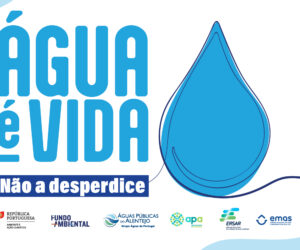Opinion (Rogério COPETO / Official GNR): THE CRITICAL PERIOD IS WHEN NATURE WANT.
Given the tragic fire that occurred last Saturday, day 17 June, in Pedrógão Grande, that caused the death 63 civilians and 1 firefighter, and injuries to others 121, 12 firefighters and military GNR, It is with a feeling of regret that once again we address the issue of forest fires here in LN.
Lieutenant Colonel of the GNR
Master in Law and Security and Homeland Security Auditor
Head of the Education Division / Command Doctrine and Training
The first time that we addressed this issue was on 30 June 2015 in the article entitled "forest fires", then 29 June 2016 in the article "Fires, GIPS and Serra D'Ossa" is at 17 June 2017 in the article "Fires: Priority Combatants!".
I do not intend this article to point out the flaws, that surely occurred, and that contributed to the fires of Pedrógão Grande have had the tragic consequences, for all we've known, and that the article entitled "What failed on Saturday? All, such as failure for decades"Public Day 18 June, try to list.
That article is not the only one we can find in a quick search on the internet, which identifies the flaws that have been the source of the tragic forest fires in living memory.
To begin we know it was a "dry lightning" that was at the origin of the fire as echoed SIC part of the day 18 of June "Thunderstorm drought blamed for causing fire".
And with regard to the failures Observer says it was the Integrated Emergency and Security Networks in Portugal (SIRESP) failed, as referred to in Item 18 June, with the title "SIRESP. The controversial communications system failed (again)".
Through part on RTP 18 June called "Everything points to a 'total failure of the Civil Protection System', alert Paulo Fernandes", You can hear Paulo Fernandes, the Forestry Department of the University of Tras-os-Montes and Alto Douro say there was a "all of our civil protection system failure".
The radio part Renaissance, of 19 June, with the title "The diagnosis was done before the tragedy Pedrógão Grande", we learned that experts point eucalyptus, abandonment and lack of planning as enhancer of Pedrógão Grande tragedy.
In other words, it is concluded that these tragic fires were, once again, all causes that are repeatedly pointed out every year and already identified in various reports, as is the case report "Large forest fires and fatal accidents in 2013"Authored by the Center of Studies on Forest Fires, the Department of Mechanical Engineering, the Faculty of Science and Technology, the University of Coimbra, which was drafted by reason of the serious fires of the year 2013, which was recorded as the third most onerous of this century, soon after the years 2003 and 2005, with regard to the burnt area, but the worst due to the loss of 11 human lives, that occurred during combat the terrible fires that have occurred this year.
In that report the authors indicate as key recommendations, the Attack Boost Groups Expanded (GRUATA) and the reinforcement groups for Forest Fires (GRIF), have more training with other corporations, out of the fire season and that the "Order of Mission" provided to them on arrival, as well as be granted a "Local Guide", in order to facilitate the movement into the unknown Theater of Operations, without loss of time. It also recommends that the law be fulfilled with regard to the cleaning of forest and fuel management tracks, stating that the non-compliance are rarely punished, still it is recommended to make a deep reflection on the use of tactical fire (counterfire).
It seems to us that these recommendations were accepted by the various entities that embody the three pillars of Defense for Forest Fire: Structural Prevention; Surveillance, Detection and Surveillance; and Combat, Aftermath and Surveillance Post-fire. We know that the surveillance and detection, GNR conducts various awareness-raising, namely through "Operation Zero Ignition" and from "Operation Safe Forest", still proceeding to the enforcement of DL 124/2006 of 28 June, with regard to cleaning and forest fuel management tracks, having had as a result of the inspection of much of the national territory.
And in the context of intervention in the fire we found that introduced new forms of combat, such as the "Expanded Attack" or as some like to call it "Muscular attack", which is developed using the enhanced means of neighboring fire brigades, as well as enhanced training of fire brigades, taking its entirety yet received personal protective equipment, including new uniforms and boots Fireproof, and portable shelters, that used in emergency situations can save lives.
But all these measures were implemented in order to address the most critical phase, Charlie called Phase, Special device to Combat Forest Fires (DECIF), that only starts the day 1 July, ending at 30 of September, as stipulated by "National Operational Directive No. 2" (DON2), the National Authority for Civil Protection (ANPC) and approving the DECIF 2017, having the fire Pedrógão Grande thus occurred during Phase Bravo, so it has been for this reason that reached such large proportions.
Despite all the flaws pointed ago, we believe that these fires would not have had the tragic consequences, if it had occurred during Phase Charlie, therefore we agree with those who argue that the existence of phases does not make any sense. As we say in the title, the Critical Period is when nature wants, we find that this last these days were fulfilled all weather conditions, to be considered as critical period, It should therefore been implemented all the measures that would be taken if we were in Phase Charlie, as his example of these measures is the "Surveillance Armada".
The "Armed Surveillance" is implemented whenever the District Command of Relief Operations (CDOS) send yellow or higher alert the first responders come into armed guard, preposicionando up in the Strategic Local Park (LEE), as is described in "Procedures for Surveillance, first Intervention, Combat Support, Aftermath and post-fire surveillance"The National Forest Authority, dated March 2012.
And through the Annex 31 (Team Forest Firefighters Integrated Device Structural Prevention (DIPE) - performance of procedures during the critical period), the DON2, we find that the LEE são manned by teams with Personal Protective Equipment, Firefighter Equipment Manual and Hydraulic Equipment, from 11.30 to 19.30, every day of the Critical Period and whenever issued yellow warning or higher.
In other words, if there were the various stages that provides DON2, Alfa, Bravo, Charlie e Delta, and dividing the calendar year into four, without taking into account the adverse weather conditions can occur at any time of the year, we believe that the fires of Pedrógão Grande had not even started, and was soon quashed at the beginning, when it was only a tree on fire.

























